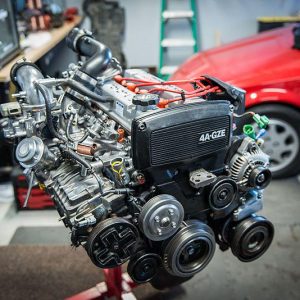Description
Our most popular course ever – ECU Tuning and Remaps. this course teaches you how to set up and tune ECUs for motorsport or OEM applications. Learn to tune aftermarket as well OEM ECUs, Petrol and Diesel vehicles, Two-wheeler and Four-wheeler applications as well.
Alternately, use this course as the Level 0 course that introduces you to the Automotive Domain covering topics such as Mechatronics, Electrical and Electronics Fundamentals, Control Systems, Calibration, Testing and Validation.
Unlocking Automotive Performance: The Art and Science of ECU Tuning and Remapping
In the rapidly evolving world of automotive technology, enthusiasts and professionals alike are continually seeking methods to enhance vehicle performance, efficiency, and responsiveness. One of the most effective and sophisticated approaches to achieving these goals is through Electronic Control Unit (ECU) tuning and remapping. This process involves modifying the software within a vehicle’s ECU to optimize engine performance, fuel efficiency, and overall drivability.
Understanding the ECU: The Brain of Modern Vehicles
The ECU serves as the central processing unit of a vehicle, managing various engine functions such as fuel injection, ignition timing, air-fuel ratio, and turbo boost pressure. By analyzing data from numerous sensors, the ECU ensures that the engine operates within optimal parameters, balancing performance, emissions, and fuel economy.
However, manufacturers often program ECUs with conservative settings to accommodate diverse driving conditions, fuel qualities, and regulatory requirements across different regions. This conservative approach means that many vehicles have untapped performance potential that can be unlocked through precise tuning and remapping.
The Science Behind ECU Tuning and Remapping
ECU tuning and remapping involve altering the default software settings within the ECU to enhance engine performance. This process requires a deep understanding of engine dynamics, software calibration, and the interplay between various engine components.
Key Parameters Modified During Remapping
-
Fuel Injection Timing and Quantity: Adjusting when and how much fuel is injected into the combustion chamber can significantly impact power output and fuel efficiency.
-
Ignition Timing: Optimizing the timing of the spark plug firing ensures complete combustion, leading to improved performance and reduced emissions.
-
Turbo Boost Pressure: For turbocharged engines, modifying the boost pressure can increase air intake, resulting in higher power output.
-
Throttle Response: Enhancing throttle sensitivity provides a more immediate and responsive driving experience.
-
Rev Limiters and Speed Governors: Adjusting these limits can allow the engine to operate at higher RPMs, unlocking additional performance.
-
Air-Fuel Ratio (AFR): Fine-tuning the AFR ensures optimal combustion, balancing power and fuel economy.
Benefits of ECU Tuning and Remapping
1. Enhanced Engine Performance
One of the primary motivations for ECU remapping is to increase engine power and torque. By optimizing fuel delivery, ignition timing, and boost pressure, remapping can yield significant performance gains. For instance, turbocharged engines can experience power increases of up to 30%, transforming the driving experience.
2. Improved Fuel Efficiency
Contrary to the belief that performance enhancements compromise fuel economy, precise ECU tuning can lead to better fuel efficiency. By optimizing combustion parameters, the engine operates more efficiently, reducing fuel consumption during various driving conditions.
3. Customized Driving Experience
ECU remapping allows for tailoring the vehicle’s performance characteristics to individual preferences. Whether seeking a more aggressive throttle response for spirited driving or a smoother power delivery for daily commuting, remapping can accommodate diverse driving styles.
4. Elimination of Flat Spots and Turbo Lag
Factory ECU settings may result in flat spots or delayed throttle response, particularly in turbocharged engines. Remapping addresses these issues by refining the power delivery curve, ensuring a seamless and responsive acceleration.
5. Compatibility with Aftermarket Modifications
For vehicles equipped with aftermarket performance parts such as exhaust systems, air intakes, or intercoolers, ECU remapping ensures that these components operate harmoniously, maximizing their benefits.
The ECU Remapping Process
1. Diagnostic Assessment
Before initiating the remapping process, a comprehensive diagnostic assessment is conducted to evaluate the vehicle’s current performance and identify any underlying issues. This step ensures that the engine is in optimal condition for tuning.
2. Reading the Original ECU Map
Using specialized tools and software, the original ECU map is extracted. This map contains the factory settings governing engine operation.
3. Modifying the ECU Map
Experienced tuners analyze the original map and make precise adjustments to various parameters, such as fuel delivery, ignition timing, and boost pressure. The modifications are tailored to the vehicle’s specifications and the desired performance outcomes.
4. Writing the Modified Map
The revised ECU map is then written back into the vehicle’s ECU. This process may involve flashing the ECU via the On-Board Diagnostics (OBD) port or directly accessing the ECU hardware.
5. Testing and Fine-Tuning
Post-remapping, the vehicle undergoes rigorous testing to evaluate performance improvements and ensure engine reliability. Fine-tuning may be performed to address any anomalies and optimize the results.
Tools and Software Utilized in ECU Tuning
Professional ECU tuning requires specialized tools and software to access, modify, and write ECU maps. Some commonly used tools include:
-
Alientech KESS and K-TAG: These devices facilitate reading and writing ECU data via OBD or direct connection.
-
ECM Titanium: A software platform that allows for the visualization and modification of ECU maps.
-
WinOLS: A comprehensive software used for editing ECU maps, offering advanced features for experienced tuners.
-
CANape: A development tool from Vector Informatik used for calibrating algorithms in ECUs at runtime, widely adopted by OEMs and ECU suppliers.
ECU Tuning for Different Vehicle Types
Petrol Engines
Petrol engines benefit significantly from ECU remapping, with enhancements in throttle response, power delivery, and overall drivability. Adjustments to ignition timing and fuel maps can yield substantial performance gains.
Diesel Engines
Diesel engines, known for their torque and fuel efficiency, can experience notable improvements in power and responsiveness through remapping. Optimizing boost pressure and fuel delivery enhances performance while maintaining or even improving fuel economy.
Two-Wheelers
Motorcycles and scooters can also benefit from ECU tuning, with improvements in throttle response, acceleration, and overall engine performance. Remapping ensures that the engine operates efficiently, providing a more engaging riding experience.
Four-Wheelers
From compact cars to high-performance vehicles, four-wheelers experience enhanced power, torque, and fuel efficiency through ECU remapping. Tailored tuning accommodates various driving preferences and performance goals.
Considerations and Risks
While ECU remapping offers numerous benefits, it’s essential to consider potential risks and ensure that tuning is performed by qualified professionals.
-
Warranty Implications: Modifying the ECU may void the manufacturer’s warranty. It’s crucial to understand the warranty terms before proceeding.
-
Engine Reliability: Improper tuning can lead to engine damage or reduced longevity. Professional tuning ensures that modifications remain within safe operational limits.
-
Regulatory Compliance: Emission standards and regulations vary by region. Ensure that remapping complies with local laws to avoid legal issues.
The Importance of Professional Training
Given the complexity and precision required in ECU tuning, professional training is indispensable. ReynLab’s ECU Tuning and Remap Course Level 1 Online offers comprehensive instruction in ECU setup and tuning for both motorsport and





